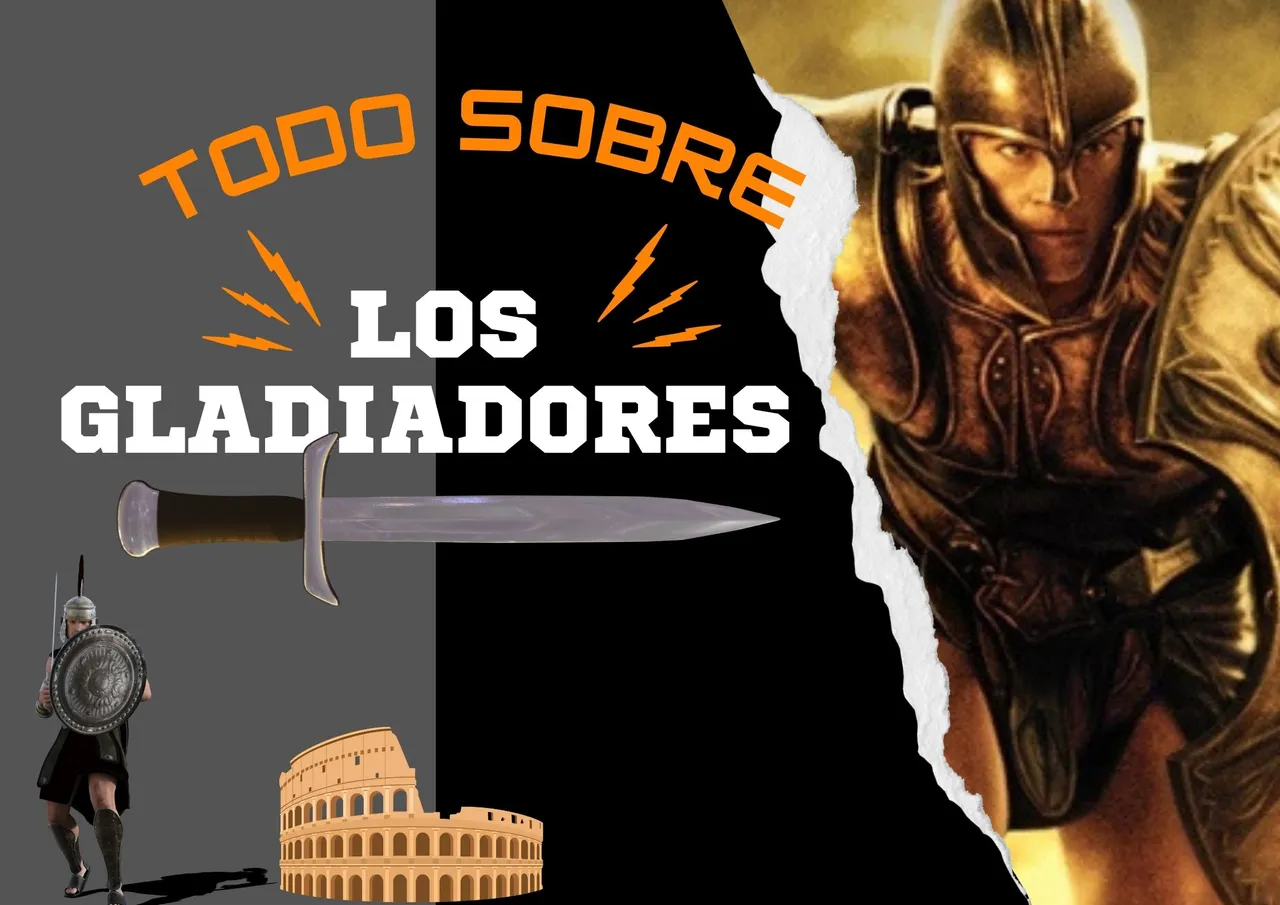
¡Hola, amigo Hiver! ¿Te gustaría saber todo acerca de esos aguerridos luchadores que vivieron durante el imperio romano? ¿Cuál es su origen? ¿Cómo era su vida diaria? No te preocupes que en este artículo te voy a contar todo lo que quieres saber.

El Origen
Los gladiadores tienen un origen etrusco ya que ésta era una cultura que influenciaba mucho a Roma, por estar tan cerca. En el siglo VI A.C, los estruscos solían luchar entre sí para honrar a los difuntos, pero esto se llevaba a cabo solo en las familias ricas que eran las que podían costear este tipo de eventos, y posteriormente fueron evolucionando hasta llegar a ser lo que hoy en día conocemos como el gladiador romano.
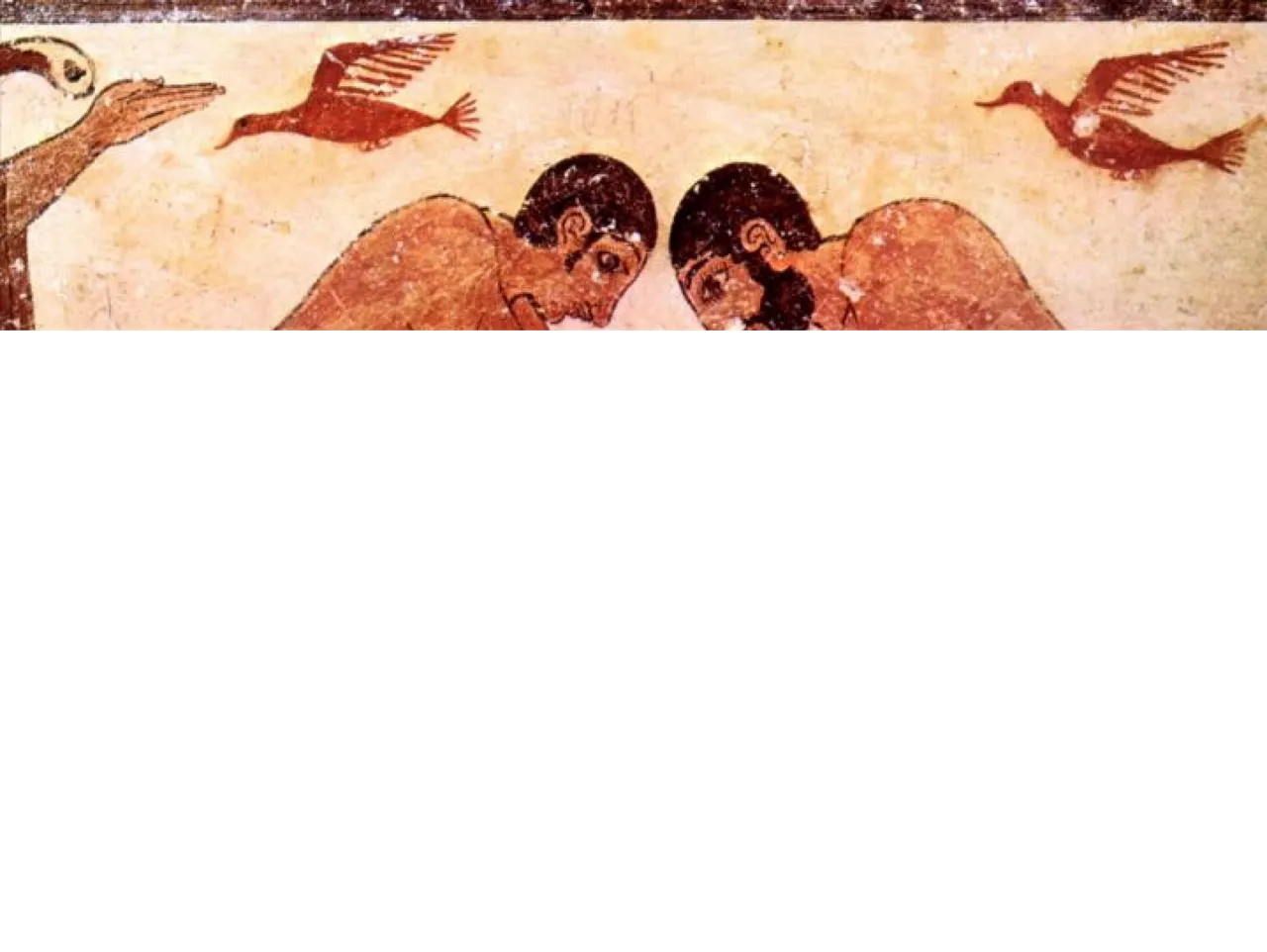
En términos generales, los gladiadores eran luchadores que se enfrentaba a muerte para divertir a una audiencia y principalmente al César (gobernante de Roma) Algunos de estos gladiadores eran voluntarios, pues estaban en busca de fama y fortuna, pero otros eran esclavos y condenados a muerte.
¿Cómo se formaba un gladiador?
Los gladiadores se formaban en el Ludus Magnus, que era una escuela de gladiadores situada muy cerca del anfiteatro Flavio. Este lugar estaba regentado por los Lanistas, que eran los encargados de reclutar a los hombres que consideraban actos para su posterior entrenamiento.
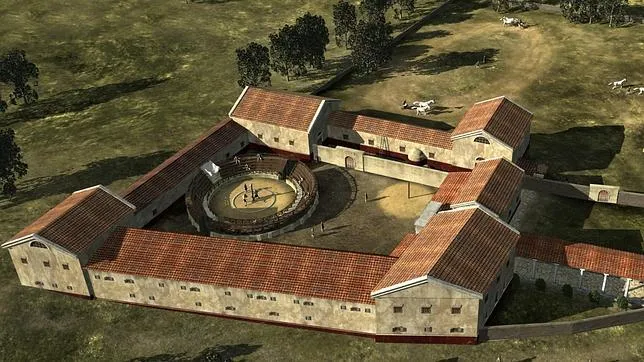
Los lanistas buscaban candidatos entre los esclavos de guerra, ya que les parecían aptos debido a su experiencia, los criminales que habían sido condenados al Ludus, también llamado Damnatio ad ludum, en el caso de que un lanista hubiese visto aptitudes adecuadas en él para la lucha, y finalmente estaban los voluntarios, llamados Auctorati.
En este lugar vivían aproximadamente unos 75 gladiadores y estaba dividido en dos partes. En el ala sur estaban las celdas donde vivían los gladiadores comunes, y el ala oeste estaba destinada a los gladiadores más destacados.
Como trataban a los gladiadores
A pesar de que los gladiadores eran admirados en el ruedo por los ciudadanos, considerándolos como héroes o atletas de calidad, en realidad ellos eran marginados, considerados como Infamis, es decir, una categoría social muy baja e incluso deshonrosa que incluía actores y prostitutas.
No obstante, ellos jamás eran maltratados, debido a que representaban una fuerte inversión económica para los lanistas, de modo que a pesar de que los gladiadores tenían un duro entrenamiento que duraba nueve horas diarias durante dos años, ellos tenían muy buena alimentación, médicos particulares y todas las comodidades necesarias para mantenerlos sanos y en buenas condiciones físicas.
Tipos de gladiadores
Los gladiadores se clasificaban de acuerdo a sus armas e indumentaria.
Samnitas:
Ellos usaban yelmo, casco, escudo rectángular grande y una espada corta. Tenían protegido el brazo derecho.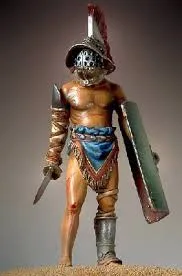
Reciario:
Este gladiador usaba un protector en el brazo izquierdo y tenía como armas una red en la mano derecha, un tridente y un puñal. Tenía una técnica especial de combate, el objetivo era mantener al oponente alejado para capturarlo con su red.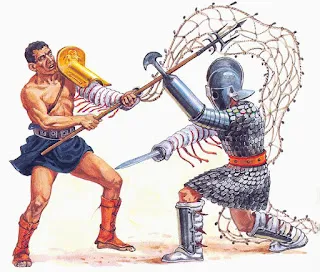
Secutor:
Tenía protectores en el brazo y pierna derechos, usaba un escudo grande, un casco liso y una espada corta.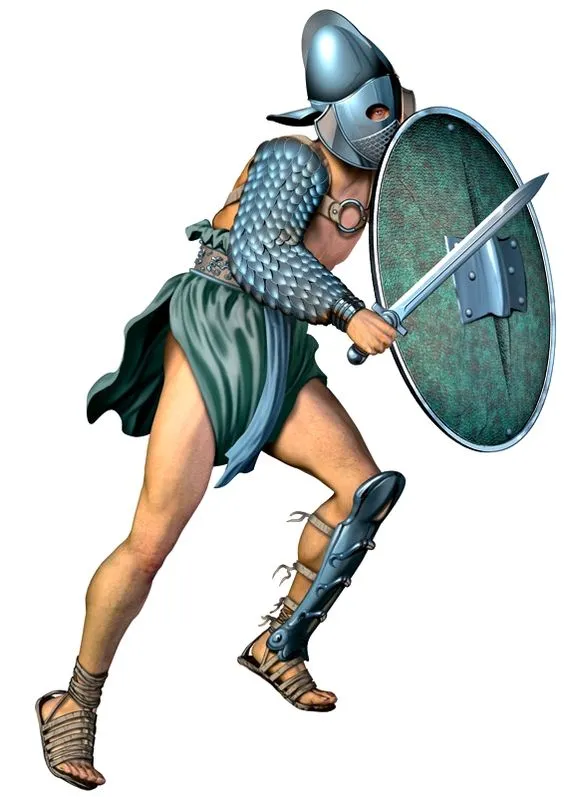
Mirmilo:
Usaba un casco adornado con un pez, un escudo bastante grande, y llevaba la pierna izquierda y el brazo derecho protegidos.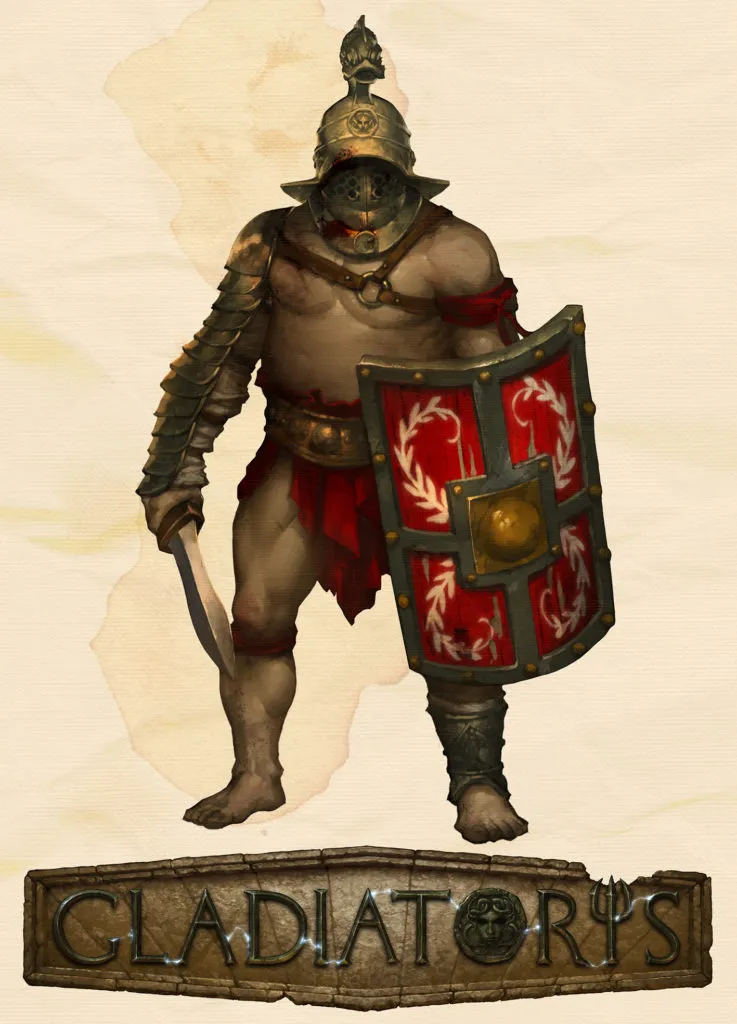
Traex, también llamado Tracio:
Estos gladiadores usaban una espada curvada llamada «sica» (de aquí deriva la palabra «sicario») y como protección tenía un escudo pequeño llamado «parmula»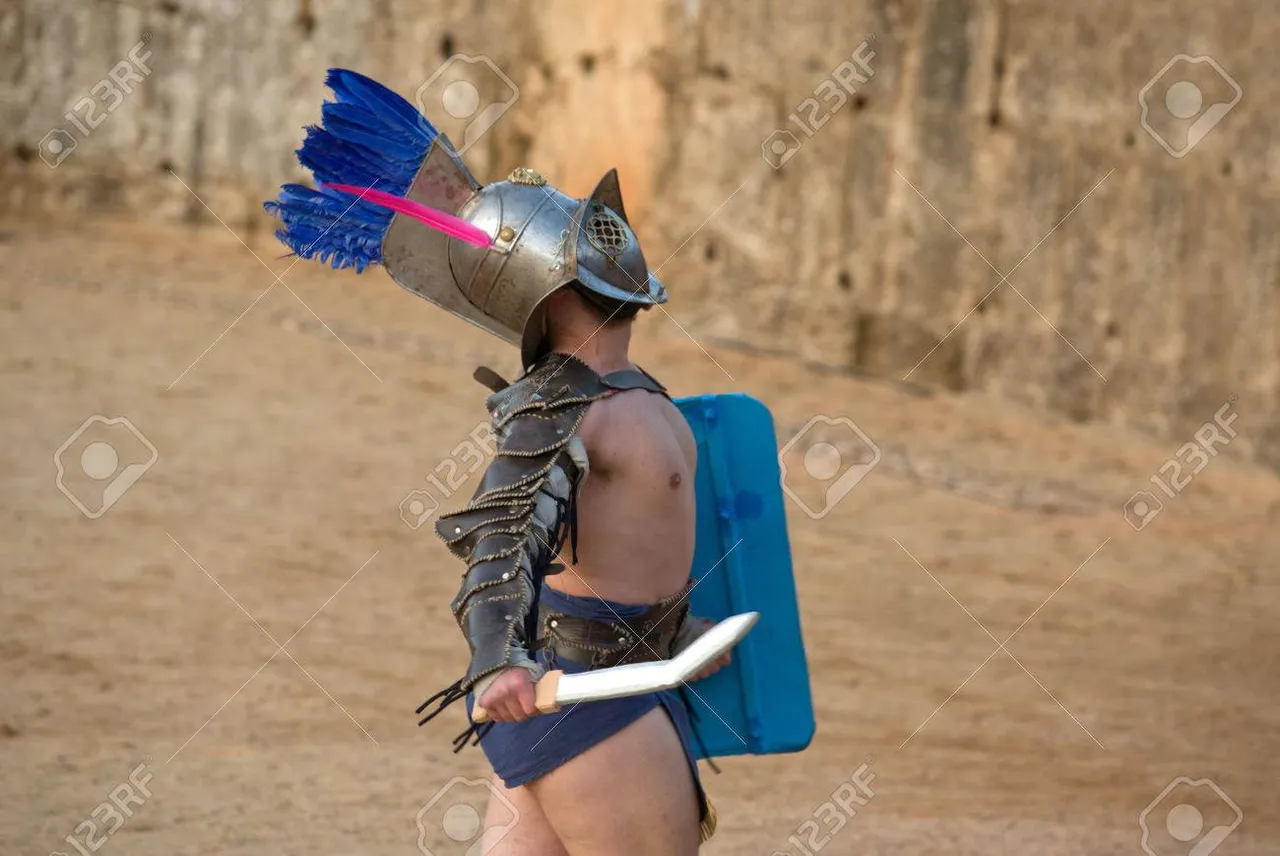
Hoplomaco:
Tenía un escudo y casco de plumas como protección y para defenderse usaba una lanza y un puñal.
Provocator:
Este gladiador llevaba el pecho protegido por un escudo adornado con la imagen de la esfigie de la gorgona, también usaba un escudo rectángular grande y protección en el brazo derecho. Como su nombre lo indica, este gladiador solía provocar a sus oponentes y solo se enfrentaba con luchadores del mismo tipo, lo que hacía que las luchas fueran equilibradas.
Equites:
Tenían protección en las piernas y un escudo redondo. Este tipo de gladiador luchaba desde el lomo de un caballo.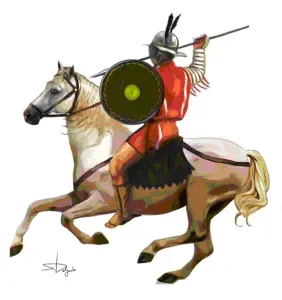
Sagittario:
Su estilo de lucha era con arco y flechas.
Dimachareus:
Se protegía ambos brazos y piernas, y estaba armado con dos cuchillos pues no llevaban escudo. Se cree que el famoso gladiador llamado Espartaco, pertenecía a esta clase.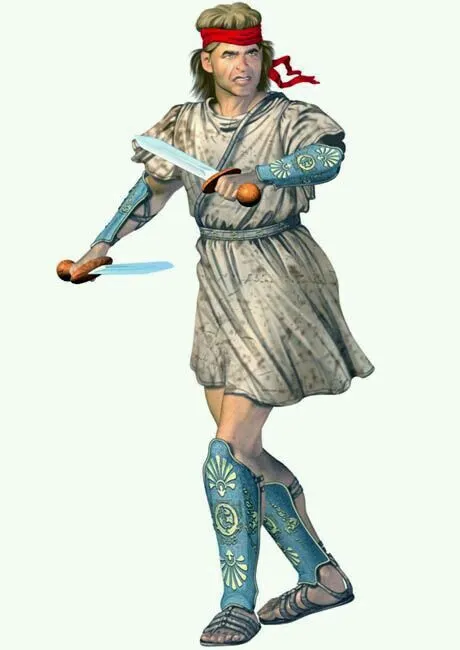
Essedarii:
Su estilo de combate era sobre un carro llamado «Esseda»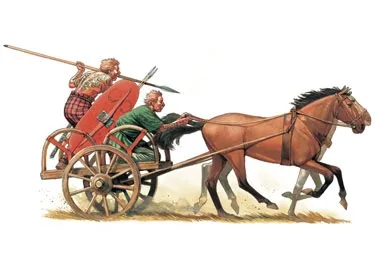
Andabatae:
A este tipo de gladiador pertenecían los que estaban obligados a luchar, no estaban allí por voluntad propia, no habían recibido ningún entrenamiento y estaban allí como castigo, condenados a morir en la arena del coliseo. Cuando la lucha terminaba, uno de los trabajadores del lugar, se encargaba de aplastarles la cabeza para asegurarse de que estaban muertos.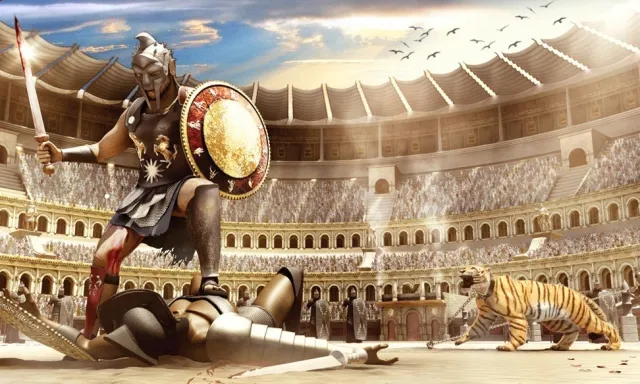

Durante muchos años se creyó que no existían las mujeres gladiadoras, no obstante tras posteriores estudios se descubrió que sí existieron. Estas mujeres era llamadas «Gladiatrix».

También había gladiadores que luchaban con animales ya que habían recibido un entrenamiento especializado para ello, a estos se les conocían por el nombre de «Venatores» o «Bestiarii».
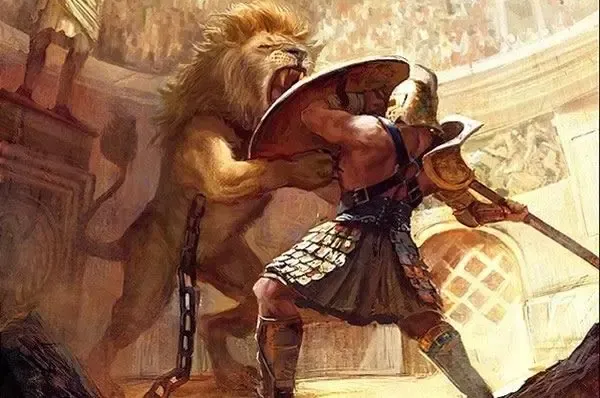
El César tenía el poder de decidir si el gladiador vencido debía morir o vivir. Esta decisión la exteriorizaba a través de una seña. El pulgar arriba significaba que viviría (señal que actualmente tomamos como sinónimo de aprobación) y el pulgar abajo significaba muerte (sinónimo de desaprobación actualmente)
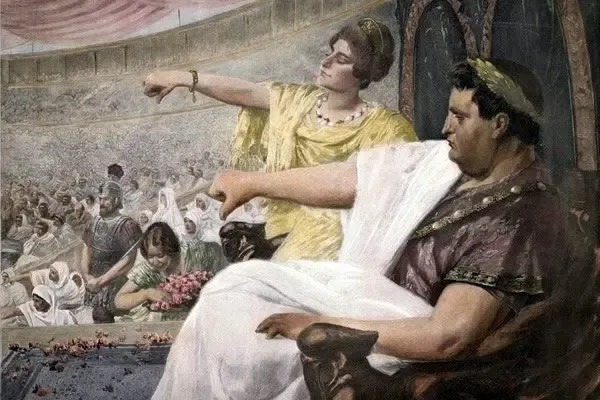
No obstante, las vírgenes vestales también tenían este poder de decisión.

Y bien, amigos hemos llegado al final de este artículo, espero que les haya gustado y que hayan aprendido algo acerca de estos luchadores que Hollywood ha hecho tan famosos. Muchas gracias por toda su atención.
Aquí les dejo las fuentes en las cuales encontré información para la realización de este post.
Here are the sources from which I found the information for this post.


Hello, my friend Hiver! Would you like to know everything about those fighters who lived during the Roman Empire? What is their origin? What was their daily life like? Don't worry that in this article I'm going to tell you everything you want to know.

The Origin
The gladiators have an Etruscan origin since this was a culture that influenced Rome a lot, being so close. In the 6th century B.C., the Etruscans used to fight each other to honor the dead, but this took place only in wealthy families who could afford this type of event, and later evolved into what we know today as the Roman gladiator.

In general terms, gladiators were fighters who fought to the death to amuse an audience and mainly the Caesar (ruler of Rome). Some of these gladiators were volunteers, as they were in search of fame and fortune, but others were slaves and condemned to death.
How was a gladiator trained?
Gladiators were trained at the Ludus Magnus, which was a gladiatorial school located very close to the Flavian amphitheater. This place was run by the Lanistas, who were in charge of recruiting the men they considered acts for further training.

The lanistas looked for candidates among the war slaves, since they seemed suitable because of their experience, the criminals who had been condemned to the Ludus, also called Damnatio ad ludum in case a lanista had seen suitable aptitudes in him for fighting, and finally there were the volunteers, called Auctorati.
In this place lived approximately 75 gladiators and was divided into two parts. In the south wing were the cells where the common gladiators lived, and the west wing was destined to the most outstanding gladiators.
How gladiators were treated
Although the gladiators were admired in the arena by the citizens, considering them as heroes or quality athletes, in reality they were marginalized, considered as Infamis, that is, a very low and even dishonorable social category that included actors and prostitutes.
However, they were never mistreated, because they represented a strong economic investment for the lanistas, despite the fact that the gladiators underwent a tough training that lasted nine hours a day for two years, they had very good food, private doctors and all the necessary comforts to keep them healthy and in good physical condition.
Types of gladiators
The gladiators were classified according to their weapons and clothing.
Samnites:
They wore a helmet, large rectangular shield and a short sword. Their right arm was protected.
Reciario:
This gladiator wore a protector on his left arm and had as weapons a net in his right hand, a trident and a dagger. He had a special combat technique, the objective was to keep the opponent away to capture him with his net.
Secutor:
He had protectors on his right arm and leg, wore a big shield, a smooth helmet and a short sword.
Mirmilo:
He wore a helmet adorned with a fish, a rather large shield, and carried his left leg and right arm protected.
Traex, also called Thrax:
These gladiators used a curved sword called "sica" (this is the origin of the word "sicario") and as protection they had a small shield called "parmula".
Hoplomaco:
He had a shield and feather helmet for protection and used a spear and a dagger for defense.
Provocator:
This gladiator wore his chest protected by a shield adorned with the image of the gorgon sphigure, he also wore a large rectangular shield and protection on his right arm. As his name suggests, this gladiator used to provoke his opponents and only faced fighters of the same type, which made the fights balanced.
Equites:
They had leg protection and a round shield. This type of gladiator fought from the back of a horse.
Sagittario:
His fighting style was with bow and arrows.
Dimachareus:
He protected both arms and legs, and was armed with two knives because they didn't carry a shield. It's believed that the famous gladiator called Spartacus belonged to this class.
Essedarii:
His style of combat was on a chariot called "Esseda".
Andabatae:
To this type of gladiator belonged those who were forced to fight, they were not there of their own free will, they had not received any training and were there as punishment, condemned to die in the arena of the coliseum. When the fight was over, one of the workers of the place, was in charge of crushing their heads to make sure they were dead.

For many years it was believed that women gladiators didn't exist, however after further studies it was discovered that they did. These women were called "Gladiatrix".

There were also gladiators who fought with animals because they had received specialized training to do so, these were known by the name of "Venatores" or "Bestiarii".

Caesar had the power to decide whether the defeated gladiator should die or live. This decision was externalized through a sign. The thumbs up meant that he would live (a sign we now take as a synonym of approval) and the thumbs down meant death (a synonym of disapproval nowadays).

However, the vestal virgins also had this power of decision.

And well, friends we have reached the end of this article, I hope you liked it and that you have learned something about these wrestlers that Hollywood has made so famous. Thank you very much for all your attention.
Here are the sources from which I found the information for this post.
